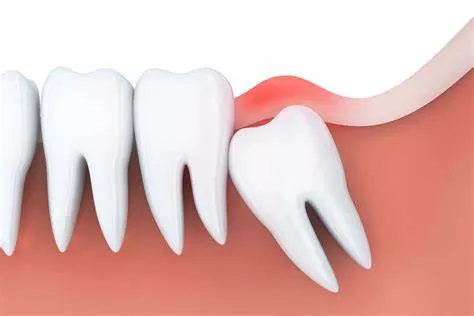Wisdom teeth, also known as third molars, are the last set of molars to emerge in the back of your mouth. For many people, these teeth can cause various issues such as crowding, pain, and infection due to their late eruption and limited space in the jaw. As a result, wisdom teeth removal is a common dental procedure. One question that often arises is whether the removal of wisdom teeth can change your face shape. Let’s explore this topic in detail.
Understanding Wisdom Teeth Removal
Before delving into the potential impact on face shape, it’s important to understand why wisdom teeth are removed.
Impacted Wisdom Teeth: These are wisdom teeth that don’t have enough room to emerge properly or are growing at an angle. Impacted wisdom teeth can cause pain, swelling, and even damage to nearby teeth.
Crowding: Wisdom teeth can contribute to crowding in the mouth, pushing other teeth out of alignment.
Infections: Partially erupted wisdom teeth can create pockets where bacteria can accumulate, leading to infections and gum disease.
Damage to Adjacent Teeth: Wisdom teeth can exert pressure on adjacent teeth, causing them to shift position or become damaged.
see also:is it ok to swallow after wisdom teeth removal
The Surgical Procedure
Wisdom teeth removal is typically performed by an oral surgeon or a dentist with surgical training. The procedure may involve local or general anesthesia, depending on the complexity of the case and the patient’s preference. During the surgery:
The surgeon makes an incision in the gum tissue to access the wisdom tooth and the surrounding bone.
If the tooth is impacted, the surgeon may need to remove bone or divide the tooth into sections for easier extraction.
Once the tooth is removed, the area is cleaned, and stitches may be placed to promote healing.
Post-Surgery Recovery
After wisdom teeth removal, patients are advised to follow post-operative care instructions diligently. This includes:
Managing Pain: Pain and discomfort are common after surgery.
Painkillers prescribed by your dentist can help alleviate this discomfort.
Swelling: Swelling around the jawline and cheeks is normal and usually subsides within a few days.
Bleeding: Some bleeding is expected initially. Gauze pads are provided to control bleeding, and biting down on them helps form a blood clot.
Diet Modifications: Soft foods and liquids are recommended initially to avoid putting pressure on the surgical site.
Oral Hygiene: Gentle rinsing with saltwater and careful brushing near the surgical area are important for preventing infection.
Impact on Face Shape
Now, let’s address the question: Does your face shape change after wisdom teeth removal?
The answer is not straightforward and varies from person to person.
Several factors can influence whether wisdom teeth removal affects your face shape:
Age: Younger individuals often experience less impact on their face shape because their bones are still growing and can adapt to changes more readily.
Number of Teeth Removed: Removing all four wisdom teeth may have a more noticeable effect compared to removing just one or two.
Pre-existing Conditions: Individuals with underlying jaw or dental issues may see more significant changes in their face shape after wisdom teeth removal.
Bone Density: The density and strength of your jawbone can influence how it responds to the removal of wisdom teeth.
Potential Changes in Face Shape
While not everyone will experience noticeable changes, some potential effects on face shape after wisdom teeth removal may include:
Reduced Cheek Fullness: The removal of wisdom teeth can sometimes lead to a slight reduction in cheek fullness, especially if there was swelling or inflammation prior to surgery.
Improved Alignment: If wisdom teeth were causing crowding or pushing adjacent teeth, their removal can improve dental alignment, which may subtly impact the appearance of your smile and jawline.
Jawbone Adaptation: Over time, the jawbone may undergo minor remodeling in response to the absence of wisdom teeth.
This can contribute to subtle changes in facial contours.
Consultation with Your Dentist
If you’re concerned about potential changes in your face shape after wisdom teeth removal, it’s important to discuss this with your dentist or oral surgeon before the procedure. They can evaluate your specific case, discuss potential outcomes, and address any questions or concerns you may have.
Conclusion
In conclusion, while wisdom teeth removal can sometimes lead to minor changes in face shape, the extent of these changes varies among individuals. Factors such as age, the number of teeth removed, and pre-existing conditions play a role in determining the impact on facial contours. Consulting with your dental professional can provide personalized insights into what to expect during and after the procedure.

